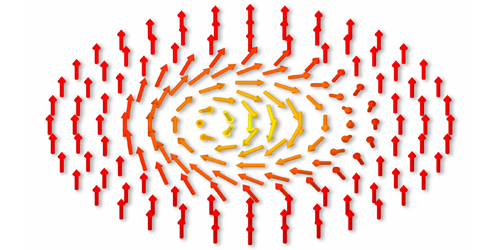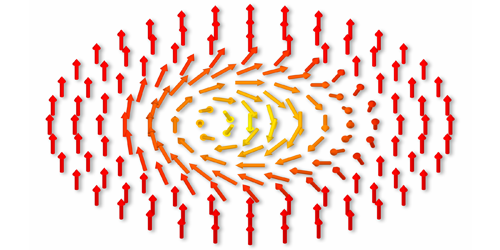Two-Pulse X Rays Probe Skyrmions
To capture microscopic fluctuations in a material, researchers can “film” the material’s behavior by measuring how it scatters coherent x rays. However, the frame rate for this so-called x-ray photon correlation spectroscopy (XPCS) is fairly slow—capturing, at best, a frame every few microseconds. A new XPCS technique uses a pair of x-ray pulses to measure fluctuations on nanosecond time scales. Joshua Turner from the SLAC National Accelerator Laboratory in California and his colleagues demonstrated their method by observing, for the first time, fluctuations in magnetic spin patterns called Skyrmions.
In a traditional XPCS experiment, a beam of coherent x rays impinges on a disordered system, such as particles floating in a liquid medium. The particles scatter the x rays, creating a random-looking speckle pattern at the detector. Researchers can analyze how this speckle pattern changes over time to uncover information about the dynamics in the sample.
To boost the time resolution, Turner and colleagues utilized a method for generating pairs of femtosecond pulses at SLAC’s free-electron laser (the LCLS). By combining the speckle pattern from each pulse, the team could see changes happening in a sample on time scales as small as 350 ps. As a demonstration, the researchers analyzed a thin film composed of iron and gadolinium layers. When exposed to a magnetic field, this material is known to form Skyrmions—vortex-like spin structures. Theories predict that Skyrmion stability is due to spin fluctuations in the magnetic domains, but no experiment has yet been able to observe such fluctuations. Using their two-pulse method, Turner and colleagues measure magnetic fluctuations on a scale of 4 ns, agreeing with expectations based on other measurements of Skyrmions.
This research is published in Physical Review Letters.
–Michael Schirber
Michael Schirber is a Corresponding Editor for Physics based in Lyon, France.





